Knives are indispensable attributes of hunters and fishermen, they are presented on the market in a large assortment. Modern industry produces a huge number of universal models with which you can do several operations for cutting animal carcasses at once.
However, multifunctional knives often lose to specialized products, so it is recommended to use your own tool at each stage of working with mascara. One of the narrow-profile options is a skinning knife - a skinner.
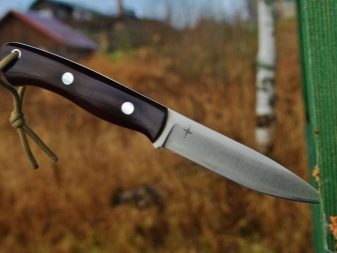
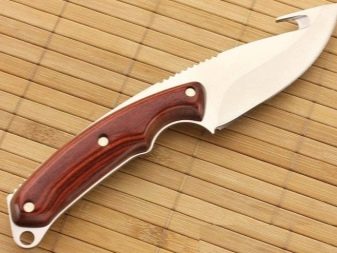
Features
A skinning knife is a device designed to refresh a dead animal, and belongs to the category of household tools. According to the legislative classification, it is not a cold weapon, and therefore does not require permits for its purchase and storage. Externally, such a knife is noticeably different from universal hunting models and consists of a short blade from 4 to 12 cm long and a convenient handle.
The blade in most models is always shorter than the handle, which allows you to accurately determine the purpose of the knife at first glance.
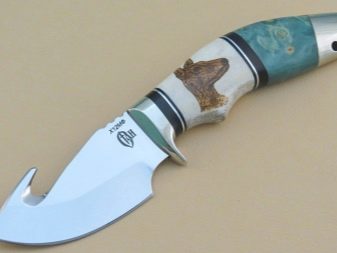

The features of the blade are one-sided sharpening and large width, the cutting line has a convex structure and ends with a sharp bend near the tip. This design provides ease of trimming tendons in the process of skinning carcasses, and the beveled line of the butt prevents skin damage. Moreover, thanks to the high descent of the blade and subtle information, the hunter controls the cut and carries out the carcass refreshment more accurately.
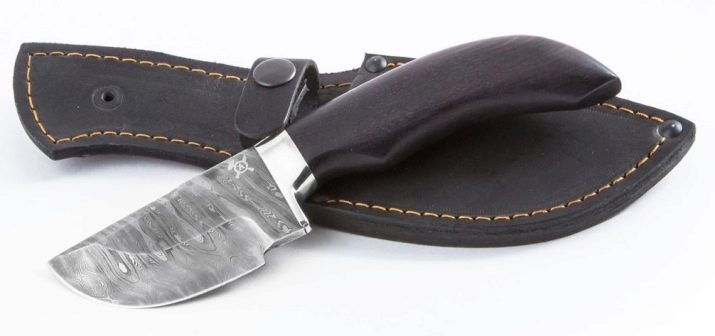
On the heel of the blade there are special stops for the fingers, preventing the knife from slipping off during operation. An important advantage of skinning knives is the flexibility of the blade, allowing, without spoiling the skin, cleverly "bypass" the bones and separate the skin from the meat of the animal. A characteristic feature of the blade is a rather thick pick and the presence on it of a hook directed to the handle of the product. Inside the hook has a sharp sharpening, which facilitates tearing and grabbing the skin.

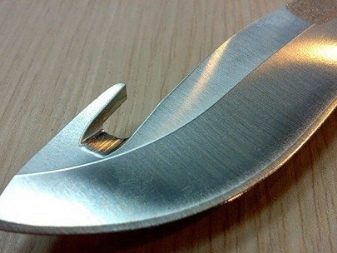
Skinner blades are made of low carbon, damask or damask steel with the addition of various composite alloys. Zirconia and titanium nitride are often used as additives, and nickel and chromium are added to alloy steel to give the blades an anticorrosive effect. In the manufacture of blades, grinding, chrome plating or burnishing technology is used, after which the product is ready for many years of operation.
According to GOST, the hardness of a blade of a skinning knife on the Rockwell scale should be at least 55 HRC.


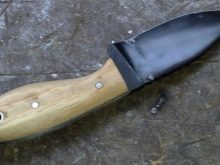
Knife handles are often made of birch or walnut wood. Such models are distinguished by a warm natural structure and in the conditions of winter hunting they do not freeze to the palm of your hand. Moreover, wooden handles are considered very light and strong and do not slip at all in the hand.
Recently, plastic or organic glass has been used to make handles. However, experienced hunters argue that working with such knives is difficult and dangerous. When interacting with animal blood, the handle becomes very slippery and often slides out of the palm of the hand.
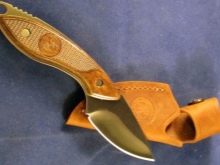
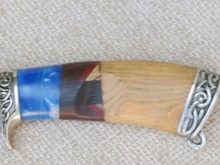
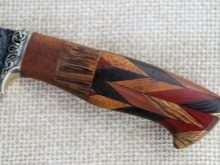
As for the purpose of the skinning knife, its name speaks for itself. The tool is used for the initial gutting of the carcass and allows you to quickly remove the skin without damaging it and without hitting the internal organs of the beast. The skater has a rather narrow specialization and cannot be used as a ring or trimming knife. The obtained hide is often stored as a trophy and adorns the hunter's house for many years. There are frequent cases when such products are passed on from generation to generation, gaining rarity status over time.



However, not all skinning knives have a classic design. You can often see models equipped with a folding mechanism or a transverse handle, the latter being better known as bonded knives.
And although Africa is considered to be the birthplace of skins, they are especially popular in the northern countries, where people have been hunting and fishing for centuries. The most famous skater of Scandinavian origin is the Finnish puukko, which is actively used in the homeland and even bears the status of a traditional national weapon.
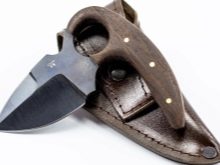
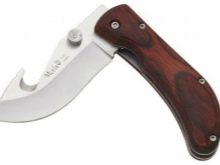
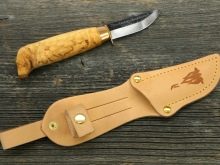
Varieties
Skins classification made according to the shape and size of the blade.
- The most common type are skinners., which is translated from English (skin) means "skin" or "skin". Skinner is a narrow-profile tool that is used to rip open the abdomen and skin the animal. For a secondary, deeper cutting of game such models are categorically not suitable.
Moreover, to finish off a shot animal with such a knife is also unrealistic. The blade has a rounded shape, a length of 10-13 cm and about the same size of the handle. A distinctive feature of the blade is the straight upper part, which allows you to cut the skin very carefully, without bumps. The skinner's blade is quite wide, and the butt is often equipped with a hook.
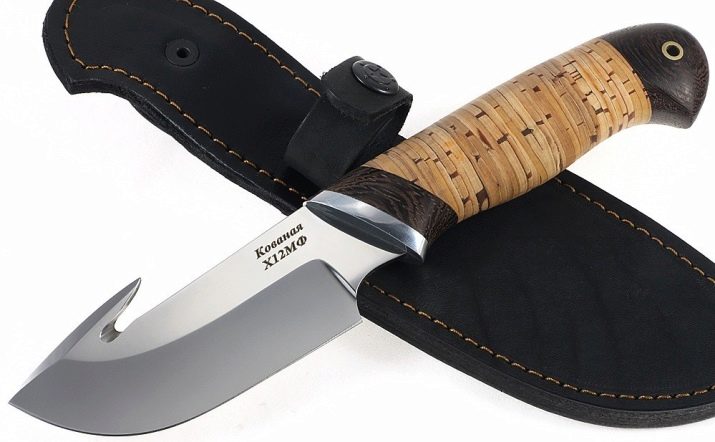
- Drop-point Models distinguished by a wide thickened blade sharpened in the middle and a straight butt. Such specimens are used not only for skinning, but also for separating fat and finishing off a shot animal.
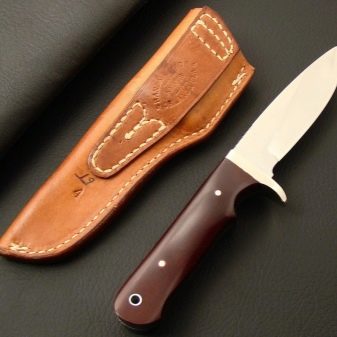
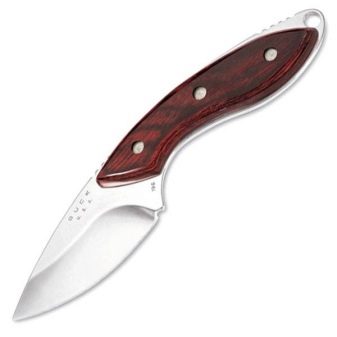
- Clip-point knives belong to the category of a professional tool and differ from the previous type in a more narrowed and accented to the center blade.The blade has excellent piercing ability, which allows you to easily pierce the skin of any thickness. The butt often has a bevel, the sharpening on which depends on the model. Due to the rounded rise, the cutting edge has an increased area, which allows you to remove the skin very easily and quickly.
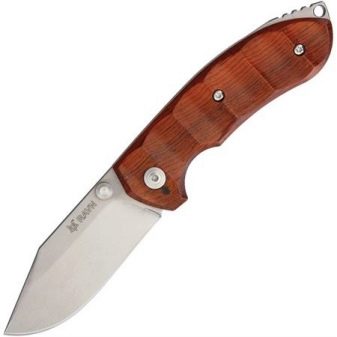
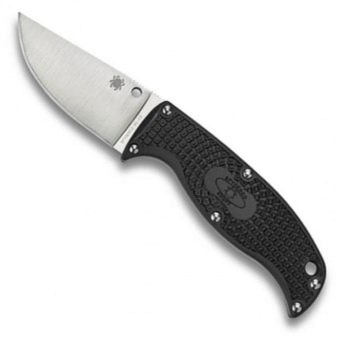
Selection rules
When choosing a knife for skinning, you must familiarize yourself with a number of important requirements, presented to the instrument.
- First of all, you need to pay attention to the metalfrom which the knife is made. The best option is low carbon, damask, alloy or damask steel with a nickel coating. Such knives are not susceptible to rust, possess the necessary hardness of the blade and serve for a very long time. In addition, blades made from such grades of steel retain the sharpness of factory grinding for a very long time and do not need to be ground for a long time.

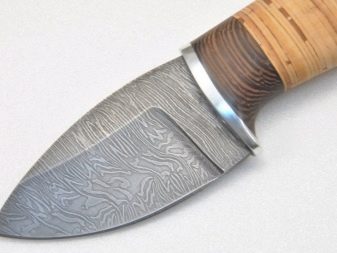
- The following criteria for choosing a skater are handle shape and material. The knife should lie well in the hand and not slip out during operation. To do this, the handle should not be equipped with curly carvings, have artistic bends or decorative furrows. The best material for its manufacture is moderately hard varieties of wood that do not swell from constant contact with moist environments, and do not crack after prolonged storage. Good handles come from wenge woodthat meets the strict requirements for the material in difficult operating conditions.
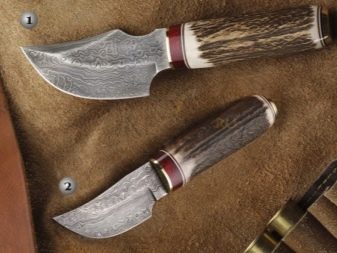

- It is also necessary to pay attention to the presence of stiffening ribs on the bladewhich increase its resistance to perpendicular loads. In addition, the thinner the knife edge is, the better, since it is much more convenient to separate the skin from the meat with thin blades. However, working with too sharp a blade is very delicate and requires a lot of experience and certain skills from the hunter.
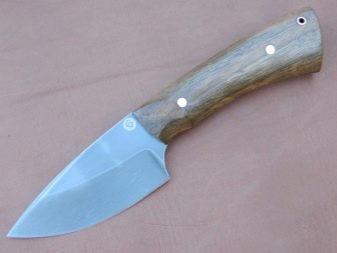
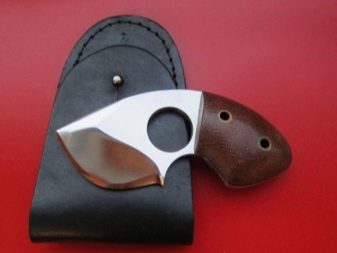
- Another parameter that you need to pay attention to when choosing a skinning knife is its size.. Recently, skaters are used not only by large animal hunters, but also by waterfowl hunters, and even by fishermen. In such cases, you need to purchase smaller models with a thinner and longer blade, the benefit is that they are on the shelves in a wide range.
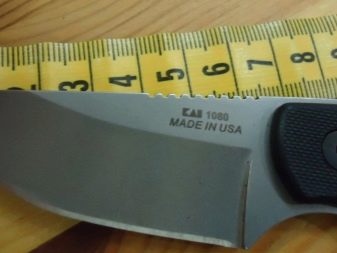
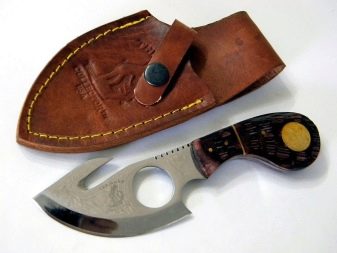
- It is also necessary to pay attention to manufacturing plant and try to acquire models of well-known, trusted manufacturers. From foreign enterprises should be noted products Swedish company EKA Knives, producing high-quality skins, which are in high demand among hunters and fishers.
From domestic manufacturers it is worth highlighting factory in the city of Zlatoust, Chelyabinsk region. The products of this enterprise do not need to be introduced and are well-known not only in our country, but also far beyond its borders.
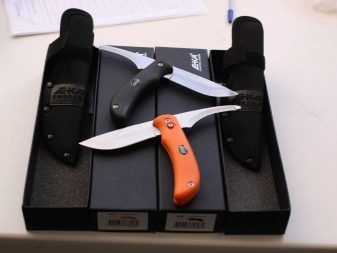

Operation tips
Working with a skinning knife requires certain skills and dexterity, and the way you use the tool depends entirely on the size of the beast and the further “fate” of the skin. In total, there are three ways to refresh the carcass: “layer”, “stocking” and “from the back”.
The first is used in relation to such animals as a bear, beaver, water rat, as well as pinnipeds and ungulates. To do this, an incision is made from the lower jaw to the tail, moving along the middle of the abdominal cavity of the beast. When skinning moles, water rats or beavers, the fur is removed with a single cut, chopping off the legs and tail.
In marine animals, on the contrary, tails and paws are left untouched. Cuts are made on the back of the forelimbs, crossing the sternum in the middle - from the right limb to the left. On the hind limbs, the incision is made between the feet and hocks from the back, passing through the rump.
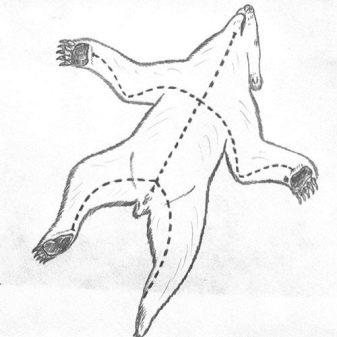
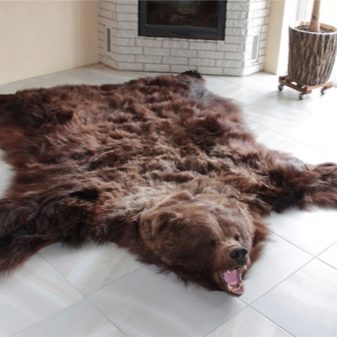
Use a knife very carefully, removing the skin from its paws and moving in the direction of the ridge. The skin is always completely removed from the head, and from the paws, depending on the beast. So, in bears it is removed along with the claws, and in beavers it is only at the level of the heels and brushes, while the claws remain in place. The described procedure is performed with a sharp knife.
However, to avoid puncture of the abdomen and contamination of the fur with the contents of the intestines, small blades are used that have a concave blade and sharpening that does not reach 1 cm to the tip of the blade. The end of the blade in such models is usually thickened, and the edges are rounded. However, for the first incision, which is performed under the lower jaw, take a knife with a pointed end, make it a short incision, then insert a blade with a blunt end into it and already make an incision to the tail.
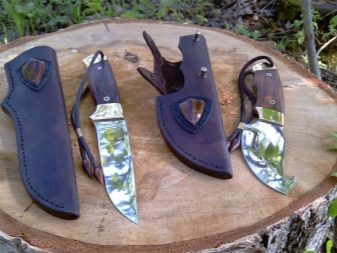
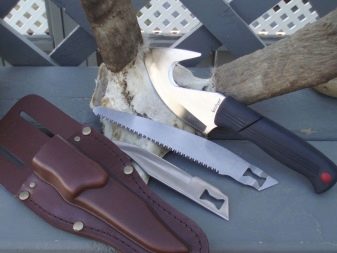
The second method - “from the back” - is somewhat more complicated than the previous one and consists in the following: the main incision is made from the tail to the back of the head along the ridge, with a slight deviation from the spine. Then they return to the tail and make incisions, heading towards the stomach, slightly not reaching the anus. Next, incisions are made on the hind limbs as described in the previous method, while departing 1 cm from the pads. The front legs "cut" above the elbows on the inner sides of the shoulders, moving further along the inner part of the forearms.
After the main incisions are made, the skin is carefully removed, paying particular attention to the axillary cavities and inguinal region, in which it is often damaged due to the large number of skin folds. The procedure is done with a sharp knife, trying to keep it almost parallel to the carcass. At the same time, skin and fat folds lightly tighten and at the same time advance the blade.
This technique is used only in those cases when they want to make a stuffed animal from the extracted animal. Most often these are wolves, lynxes, bears and other animals, which are planned to be captured in a jump or standing on their hind legs.
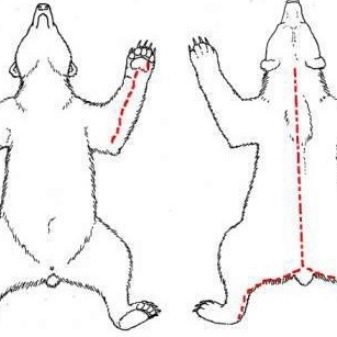
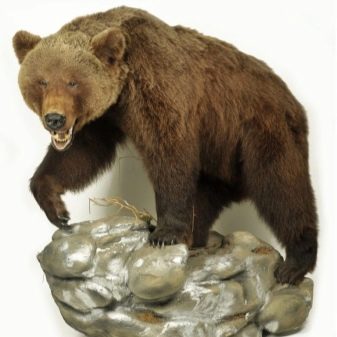
The third way to remove the skin with the help of a skinner is to remove it with a "stocking" and is used in relation to small predators and rodents. To do this, cuts on the paws with a sharp knife, as in previous cases, removing the skin from the feet and fingers of the hind legs of the animal.
The carcass is then suspended by its hind legs, passing a line between the Achilles tendons and ankles. Next, they hide the skin with a knife and pull it first from the hind legs and tail, and then from the whole carcass. If the skin is tight, it is removed circularly, carefully separating it with a knife from muscle tissue.
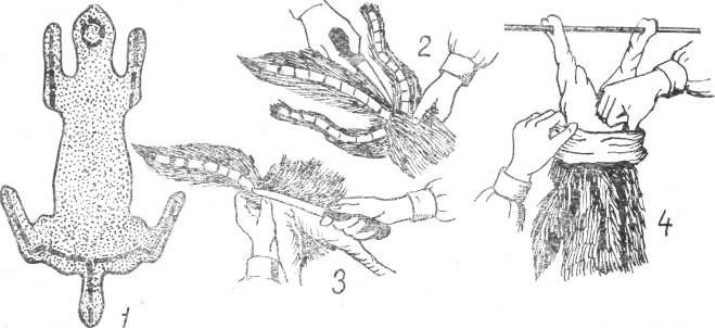
After use, the skinning knife is well cleaned of animal tissue residues, washed in warm water with any cleaning agent and rinsed under a stream of clean water.
Models made of Damascus steel and not chrome plated must be wiped dry with a clean cloth and cleaned in a dry place. Otherwise, they will quickly rust and lose their working properties. It is recommended to store knives in places inaccessible to children, having previously removed them in protective covers or wrapped with a cloth.
The use of a skinned knife for other domestic purposes, for example, to open cans of canned food, is strictly prohibited. This prohibition is due to the displacement of the central axis from the tip of the blade closer to its middle, due to which, when a metal is pierced, the knife can bounce off the can and seriously injure a person.
If the knife with the wooden handle will not be used for a long time, then it should be stored in a dry, well-ventilated room and positioned away from heating appliances. This will prevent the wood from drying out or swelling and significantly increase the life of the knife.
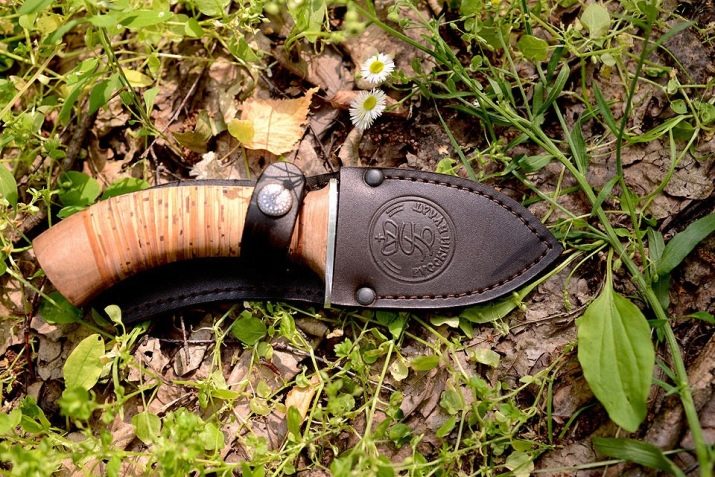
Next, see the video review of skin-damask damask knives.










